Wolf intelligence: revealing the cognitive abilities of these wonderful creatures
Wolf intelligence is an interesting and exciting topic, as this animal has amazing cognitive abilities that amaze zoologists and followers alike. The wolf is one of the most fascinating creatures with amazing learning ability and remarkable intelligence. Wolves live in herds that work with precision organization and communicate surprisingly to reach the common goal. In this article, we will explore the remarkable cognitive abilities of wolves and how they deal with environmental challenges and interact with each other.
Show key points
- Wolves possess exceptional cognitive abilities that enable them to adapt quickly to environmental changes and overcome challenges through learning.
- Operating within highly organized hierarchies, wolf packs rely on strategic cooperation and defined roles that ensure survival and success.
- Effective communication among wolves involves complex vocalizations, body language, and scent marking, facilitating social cohesion and coordination.
- ADVERTISEMENT
- Wolves employ intelligent and coordinated hunting strategies that reflect advanced problem-solving and teamwork.
- As apex predators, wolves play a vital role in maintaining ecosystem balance by regulating populations of prey and preventing disease spread.
- Leadership in wolf packs is based on experience and wisdom, with alpha wolves guiding members through decision-making and resource management.
- Studying wolves' intelligence and social structures provides valuable insights into animal behavior and the importance of wildlife conservation.
Wolf learning and adaptability to changes
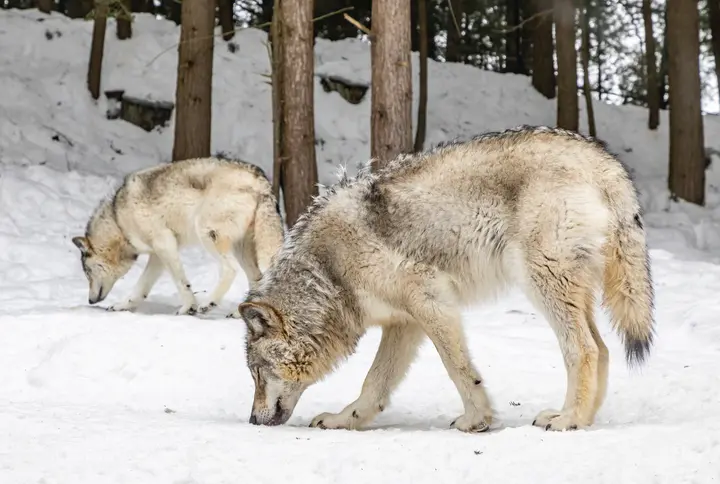
Wolves are distinguished by their exceptional ability to adapt to environmental changes and learn new things. The wolf's ability to adapt to changes makes it a unique animal in the animal world. When a wolf experiences a change in its environment or living conditions, it develops new strategies to survive and adapt to the new situation.
Recommend
The wolf faces multiple challenges over the course of its life, it can face food shortages, season changes or changes in climate. Every time a wolf undergoes a change, he assesses the situation and learns how to adapt to it. It is necessary for the wolf to be careful and rely on his intelligent ability to adapt to new changes.
Thanks to its high learning ability, the wolf is able to develop new skills to overcome challenges and adapt to the environment. For example, if there is a shortage of food in its current area, the wolf may learn how to hunt in new areas or how to use innovative ways to obtain food. The wolf's skills gradually evolve with his experiences and needs, allowing him to remain strong and successful in his changing environment.
Some studies have shown that wolves rely on cooperation and social interaction to adapt to changes. Lupus herds work systematically and cooperate with each other to achieve a common goal, whether it is hunting or land defense. The wolf learns by interacting with herd members and leverages their experience and skills in adapting to changes.
In short, the wolf's learning and ability to adapt to changes is distinctive and amazing. This high ability to learn makes the wolf a strong leader in the wild environment. We can draw inspiration from these remarkable abilities and consider them as inspiration to develop our own abilities to adapt to changes and to learn continuously.
The social abilities of the wolf and methods of effective communication
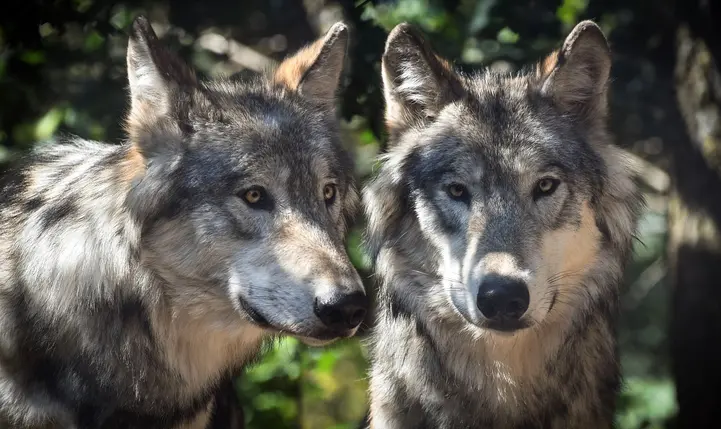
Wolves are social organisms by nature, and depend on effective communication to survive in their herd. Wolves deal with each other spectacularly as they use splashing sounds and a variety of physical expressions to communicate and share information. Wolves use their voices to communicate with the rest of the herd, sending various messages indicating threat, play, or even cuddling.
Body language is also an important medium in wolves' communication. They share body movements and facial expressions to communicate in a complex and precise way. For example, a wolf directs his gaze and the movements of the tail and ear to convey his feelings and intentions. In addition, the wolf also uses breathing differently to express its feelings and communicate with members of the herd.
Wolves react socially and get to know each other through the use of smells. Wolves leave odorous marks that act as personal signatures by which other wolves are known to be part of a herd. In addition, the wolf uses odors to communicate with the rest of the herd and transmit important information such as food and water locations and potential threats.
Wolves have a complex social system based on hierarchy and leadership. The obedient wolf addresses the commander with body movements, majestic eyes and vocal exchanges. Leadership in the herd is a great responsibility as the leader must maintain balance, properly guide the herd and achieve the common goal.
Wolves demonstrate great social abilities and effective communication methods to maintain communication and interaction within the herd. The study of these amazing abilities enhances our understanding of wolves and contributes to the protection of these magnificent creatures and their natural habitat.
Wolves as strong and organized leaders in the herd
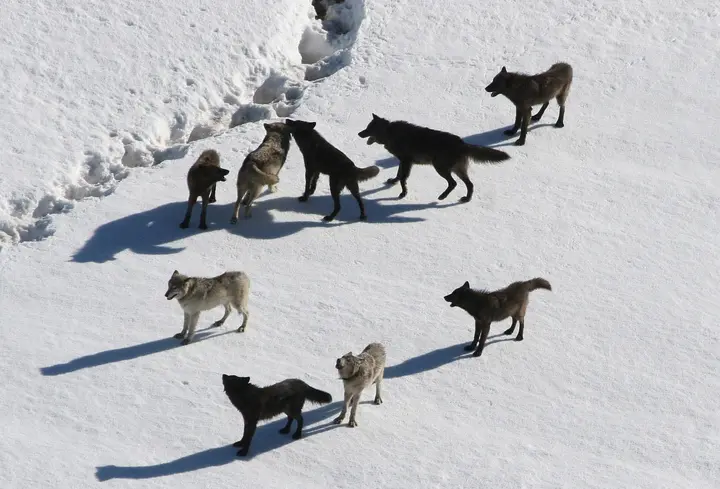
Wolves have an exceptional ability to lead and organize the herd in a way that fascinates researchers and viewers alike. She is a strong and effective leader, where the herd communicates in an orderly manner and works in an amazing spirit of cooperation and coordination. The herd is led by the most experienced and powerful male wolf, who has a responsibility to protect individuals and guide them on foraging journeys and new locations.
The strength of a wolf as a leader is achieved by several factors. His ability to make quick and informed decisions is one of the most important of these factors. The herd leader can analyze the surrounding situations and make strategic decisions to meet the needs of the herd. In addition, the leading wolf has the ability to effectively guide herd members, using voice and physical communication to guide the herd in gathering and directing it towards safe places.
Wolves are surprisingly organized in the herd, where discipline and structure are applied in the interaction between their members. This consists in determining the roles and duties of individuals within the herd based on their individual specialties and skills. For example, some wolves are assigned to defend the herd or to care for the young, while others are assigned to search for food and new sites.
Thanks to these leadership and organized abilities, wolves are an unavoidable force in the herd. Being able to work as a harmonious team enhances the chances of success and survival in harsh environments. Through these strong and organized leaders, the herd remains safe, strong, and prepared to face the challenges it may face in the wild.
Smart hunting strategies for wolves
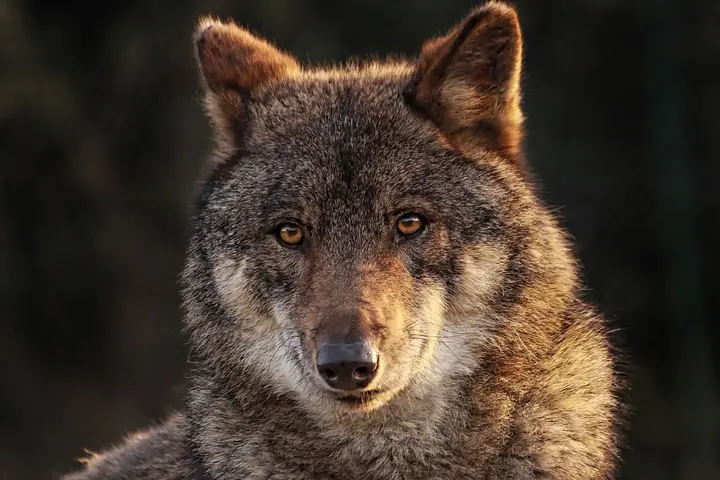
Wolves are among the most intelligent and proficient predators in the animal world. She possesses amazing fishing strategies that enable her to obtain food efficiently and successfully. These strategies are based on the cognitive abilities of wolves and their ingenious interaction with the environment and prey.
First, wolves rely on cooperation and coordination in hunting their prey. Wolves form an integral herd that works with a precise organization to seize their prey. Individuals cooperate on hunting tasks, with some dispersing the predatory herd while others approaching the prey silently and at breakneck speed. This strategy requires careful coordination and effective communication between wolves to ensure success.
Secondly, wolves rely on the use of tricks and authorship for successful hunting. Wolves are aware that some prey animals may be faster than them or able to escape easily. Therefore, wolves try to force potential prey to stand in one place or distract them with loud sayings to be able to easily approach them. Wolves also use adjacent lands and natural hindrances to their advantage, where they are able to force prey to move in a specific direction and then devour it.
Thirdly, wolves rely on patience and stealth while hunting prey. Wolves live in hidden places and exploit their nature as predators to slowly approach prey without attracting attention. Wolves are waiting for the right moment to pounce on their prey with breakneck speed and amazing accuracy.
Smart hunting strategies for wolves are not limited to these examples, as wolves use a wide range of methods and tactics depending on the surrounding conditions. Understanding these strategies and the creativity of wolves in using their cognitive tools gives us an exciting and surprising look into the minds of these wonderful creatures.
Wolves and their impact on the ecosystem
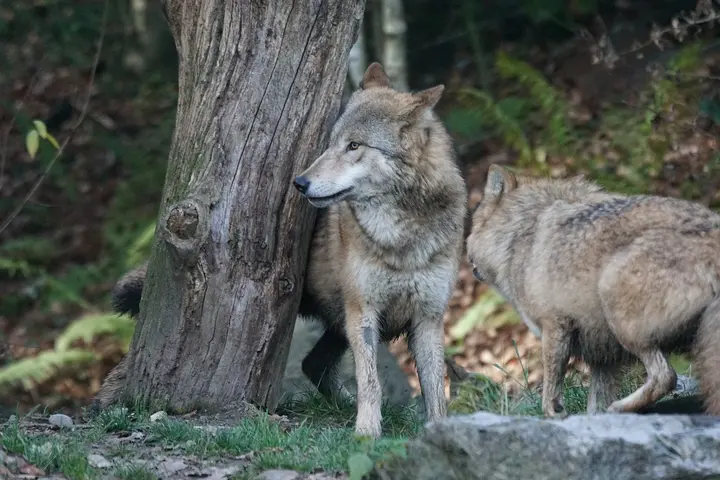
Wolves are eye-catching animals that play a crucial role in the ecosystem. They are animals at the top of the food chain and directly affect the balance of the ecosystem. Wolves maintain the balance of the natural system by regulating the numbers of animals in the area where they live and controlling the spread of their diseases.
Wolves are also effective predators in controlling the number of harmful animals and maintaining the diversity of plant life. When the number of a harmful animal in the area increases, the ecosystem is disturbed, and this is where wolves come into play. Wolves feed on these harmful animals and limit their spread, contributing to the restoration of ecological balance.
In addition, wolves work to prevent the spread of diseases between animals in the ecosystem. When an animal is infected with a particular disease, the ecosystem is at risk of the rapid spread of the disease. But thanks to improved olfactory and tracking and social abilities, wolves are able to detect the disease and get rid of the infected animal before it is transmitted to the rest of the animals.
The presence of wolves can trigger some negative reactions at times, as some are concerned about their impact on the lives of pets or their livestock. However, it must be remembered that the presence of wolves is essential to maintain the balance of the ecosystem and the diversity of wildlife. We should therefore consider wolves as an important element of the ecosystem and ensure their continued presence and protection in their natural environment.
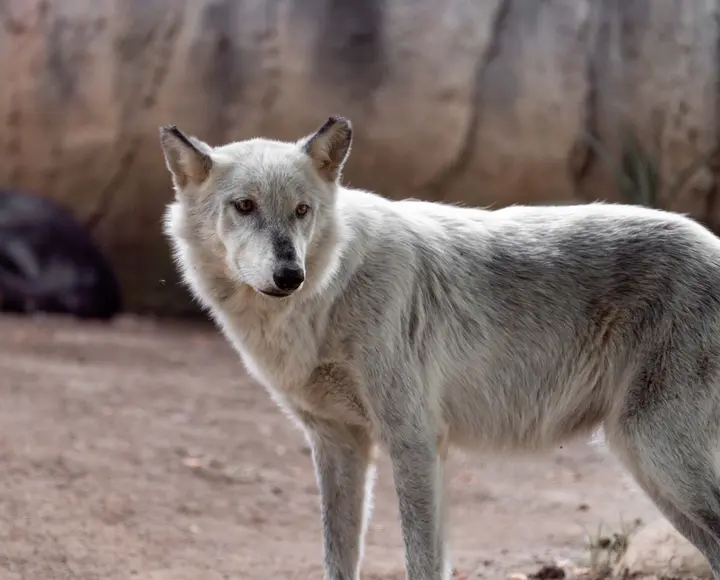
Ultimately, the study of wolf intelligence opens new doors to understanding the animal world and their cognitive abilities. The wolf is considered an extraordinary animal in its ability to learn, adapt and communicate. We must appreciate these wonderful creatures and work to preserve their natural environment to ensure their continued life and development.








